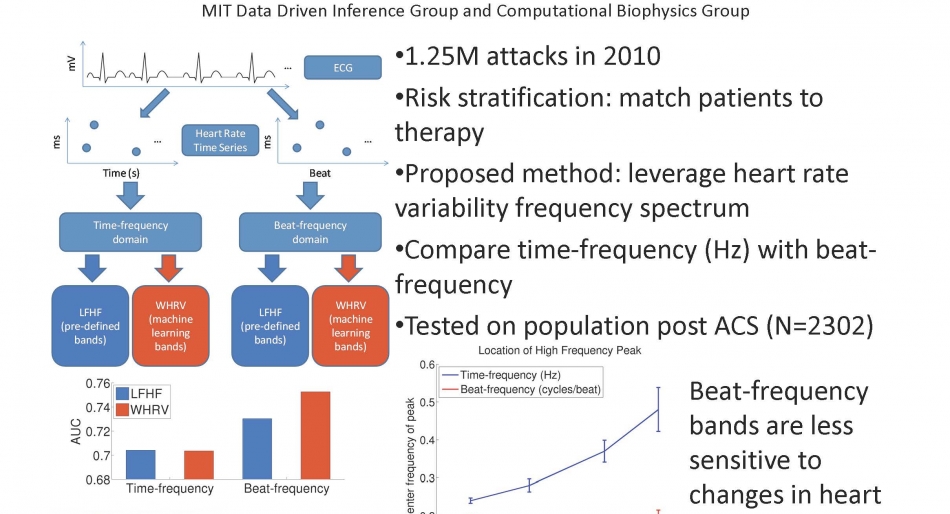
Authors: Yun Liu, John Guttag, Collin Stultz
Frequency domain measures of heart rate variability (HRV) are associated with adverse events after a myocardial infarction. However, because of natural variability in heart rate over time and across patients, patterns in the traditional “time-frequency” domain (measured in Hz) may capture different cardiac phenomena at different heart rates. An alternative is to consider frequency with respect to heartbeats, or “beat-frequency”. We compared the use of both types of frequency domains to risk stratify patients after a non-ST-elevation acute coronary syndrome (NSTEACS). We then determined whether machine learning could be used to further improve the ability of HRV metrics to identify high-risk patient subgroups. Our results on a dataset of 2,302 patients indicate that applying beat-frequency to a current HRV metric, low frequency high frequency (LFHF) improves the area under receiver operating characteristic curve (AUC) from 0.704 for time-frequency LFHF to 0.730 for beat-frequency LFHF. Use of machine learning to learn the predictive frequency bands further increased the AUC to 0.753 for beat-frequency, but not time-frequency. These improvements were statistically significant (p<0.001). We conclude that beat-frequency and machine learning improve our ability to risk stratify patients after NSTEACS, and more generally, we have presented a novel data-driven method to select frequency bands for analysis of HRV.
